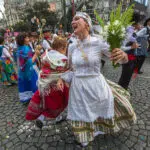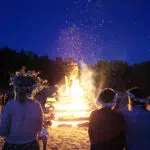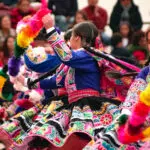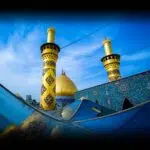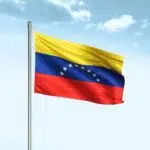Inti Raymi, or Festival of the Sun, is an annual religious celebration held every June 24 in Peru in honor of the Incan Sun God — Inti. Inti Raymi is a festival that celebrates the winter solstice and the Incan New Year. It is primarily held in Cusco. The celebration, which is perhaps the most important holiday for the Incan Empire, sees a variety of cultural activities taking place around the city to honor their Incan ancestry.
History of Inti Raymi
The Inti Raymi was first established as a celebration by Incan Emperor Pachacuti, believed to be between 1412 and 1430, to commemorate the winter solstice — the day when the sun is farthest from the Earth — and to honor the ancestors of the past. The Incas last celebrated Inti Raymi as an independent empire in 1535, before the arrival of the Spanish. Today, the tradition of celebrating the festival is maintained by theatrical and cultural showcases that are charged with mysticism and spirituality. Celebrators typically hold dances and sing songs while making offerings to the Sun God, Inti.The main celebrations are held in the Peruvian city of Cusco. It involves a multi-act historical reconstruction ritual that involves residents costumed in traditional Incan garb descending onto Cusco’s Temple of the Sun and the Plaza de Armas. Observers take up specific roles in the theatrical display. The final act of the ritual involves a four-hour prayer at the “Sacsayhuaman Fortress.” The prayers are conveyed in the traditional Quechua language and a sacrifice is simulated for a shaman to predict the state of the coming future.During the Spanish Conquest, viceroy Francisco de Toledo outlawed Inti Raymi celebrations due to it being associated with primitivism, paganism, and contradictory to the Catholic faith. It was revived in 1944 with the help of Peruvian actor and writer Faustino Espinoza Navarro. Navarro’s fascination with the tradition compelled him to promote it as an important national public holiday.Due to its proximity with St. John’s Day, Inti Raymi has been celebrated in parallel with the Catholic holiday as well and also manages to attract thousands of tourists to Cusco every year. Despite the main festivities taking place in Cusco, it is not exclusive to the city as the indigenous Andean populations of South America regularly present offerings to the Sun God every June 24. This includes people living in Ecuador, Bolivia, Chile, Northern Argentina, and Colombia.
Inti Raymi timeline
The Incan civilization celebrates its final Inti Raymi under an Incan emperor.
Inti Raymi is banned by the ruling Spanish viceroy, Francisco de Toledo.
Influential Peruvian writer Faustino Espinoza Navarro promotes a revival of Inti Raymi.
Inti Raymi is declared an official part of Peru’s cultural heritage.
Inti Raymi FAQs
What foods are eaten during Inti Raymi?
The main food of the festival is the ‘chiri uchu,’ which is a dish made up of locally-sourced ingredients such as roasted guinea pig, chicken, dried meat, sausages, cacao, cheese, roasted corn, rocoto peppers, and qocha-yuyo. Other foods traditionally consumed include ‘chicharrones’ (pork rinds) and ‘anticuchos meat.’
What did Inti do to his children?
Inti ordered his children to build the Inca capital where a divine golden bar or wedge they carried with them penetrated the earth. Incas believed that this happened in the city of Cusco. The Inca ruler was considered to be the living representative of Inti.
Why is the Plaza de Armas important in Inti Raymi?
Cusco’s Plaza de Armas is said to be built on the ground that was once an important gathering place for the Incan Empire’s elite to wait for the Sun God’s appearance. It is one of the acts of the reconstruction ritual and involves observers gathering at the plaza at night.
Inti Raymi Activities
-
Share food with others
Part of the key Inti Raymi celebrations involves the sharing of food. To commemorate the festival, prepare meals for your loved ones and your fellow neighbors as a way to celebrate togetherness and cultural unity.
-
Wear the traditional colors of Inti Raymi
Adorn the traditional Inti Raymi garb in the spirit of the festival. Wearing colorful costumes and the woven ‘aya huma’ mask is an essential part of the celebrations.
-
Witness the historical reconstruction ritual
If you happen to be in Cusco during Inti Raymi, witness the historical reconstruction of the original Inti Raymi ritual by the residents. It is known to be a spectacular, theatrical performance that sheds light on Incan spirituality and its roots.
5 Interesting Facts About The Incas
-
Food and services were their currency
The Incas functioned without a fixed currency, preferring to trade food and services instead.
-
They built an impressive road network
The Incas built a road network that ran for 25,000 miles.
-
They had a unique way of communicating
They didn't have their own writing system and communicated primarily using a complex visual communication system known as 'Khipu.'
-
Machu Picchu was untouched by the Spanish
The Incan city of Machu Picchu managed to avoid being sacked by the Spanish due to its high elevation, which made it generally invisible from below.
-
They were the region's first potato farmers
The Incas are thought to be the first civilization in the region that cultivated potatoes.
Why We Love Inti Raymi
-
It appreciates ancestral customs
The fact that the Inti Raymi event is being held today demonstrates how much the Cusco people value and appreciate their ancestral customs. It demonstrates their determination to remember their roots despite decades of attempts by the Spanish and Catholicism to erase them. It is their way of valuing their Incan heritage, especially since they are committed to completing the primary ceremony as it was done centuries ago.
-
It’s a visual and theatrical spectacle
Inti Raymi itself is quite the visual treat for visitors. The bright colors, merry music, and cultural showcases are a feast for the eyes and display the vibrancy of the Incan culture. It brings visitors one step closer to understanding the Incan culture on a deeper level.
-
It is one of many colorful traditional celebrations in Peru
Inti Raymi is only one of the many cultural heritages that Peru has to offer. The Incan heritage is deeply rooted in the Peruvian identity and peering an eye into their culture can help us understand how and why other cultures are built as so. In other words, it can make us really see beyond the stereotypes and truly understand people of differing backgrounds.
Inti Raymi dates
| Year | Date | Day |
|---|---|---|
| 2023 | June 24 | Saturday |
| 2024 | June 24 | Monday |
| 2025 | June 24 | Tuesday |
| 2026 | June 24 | Wednesday |
| 2027 | June 24 | Thursday |








